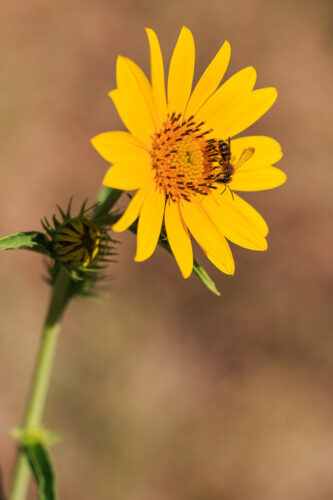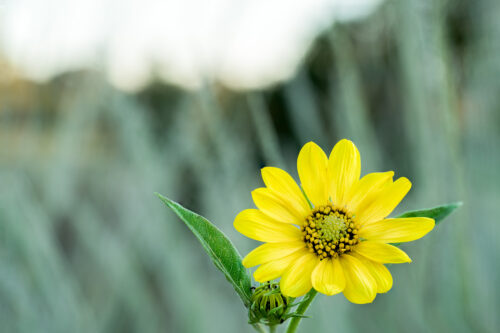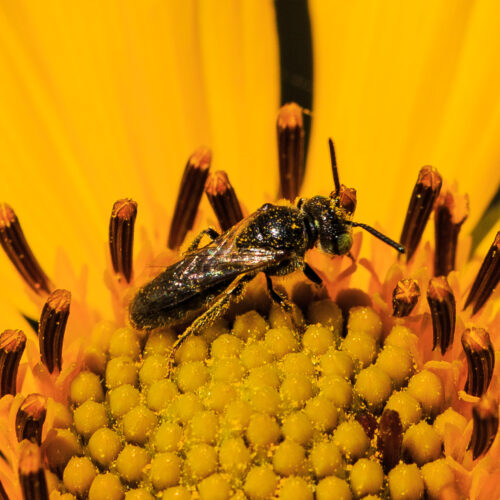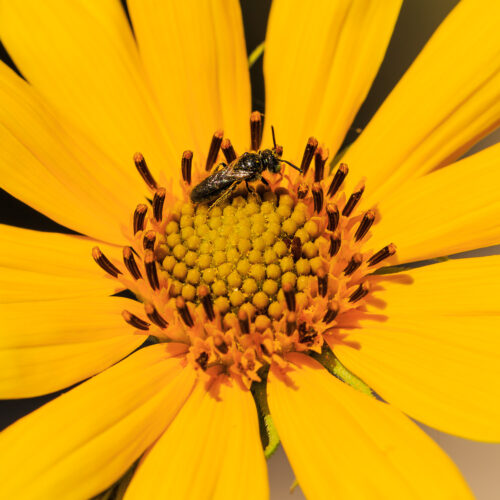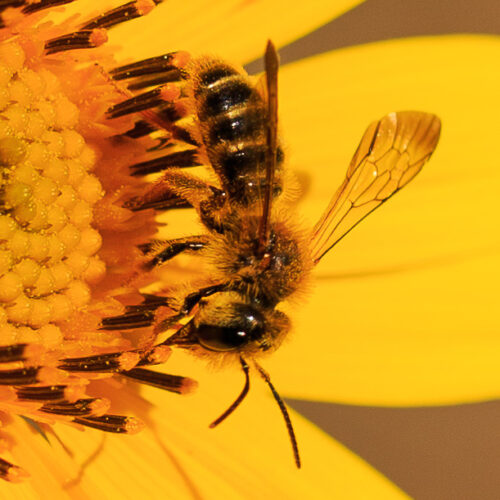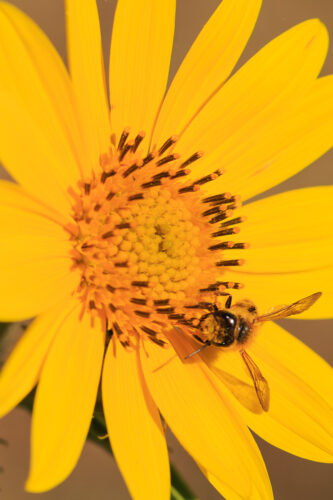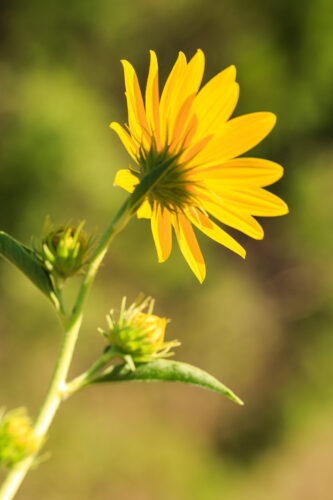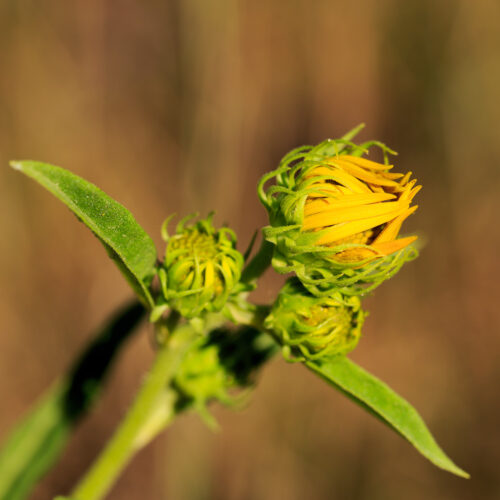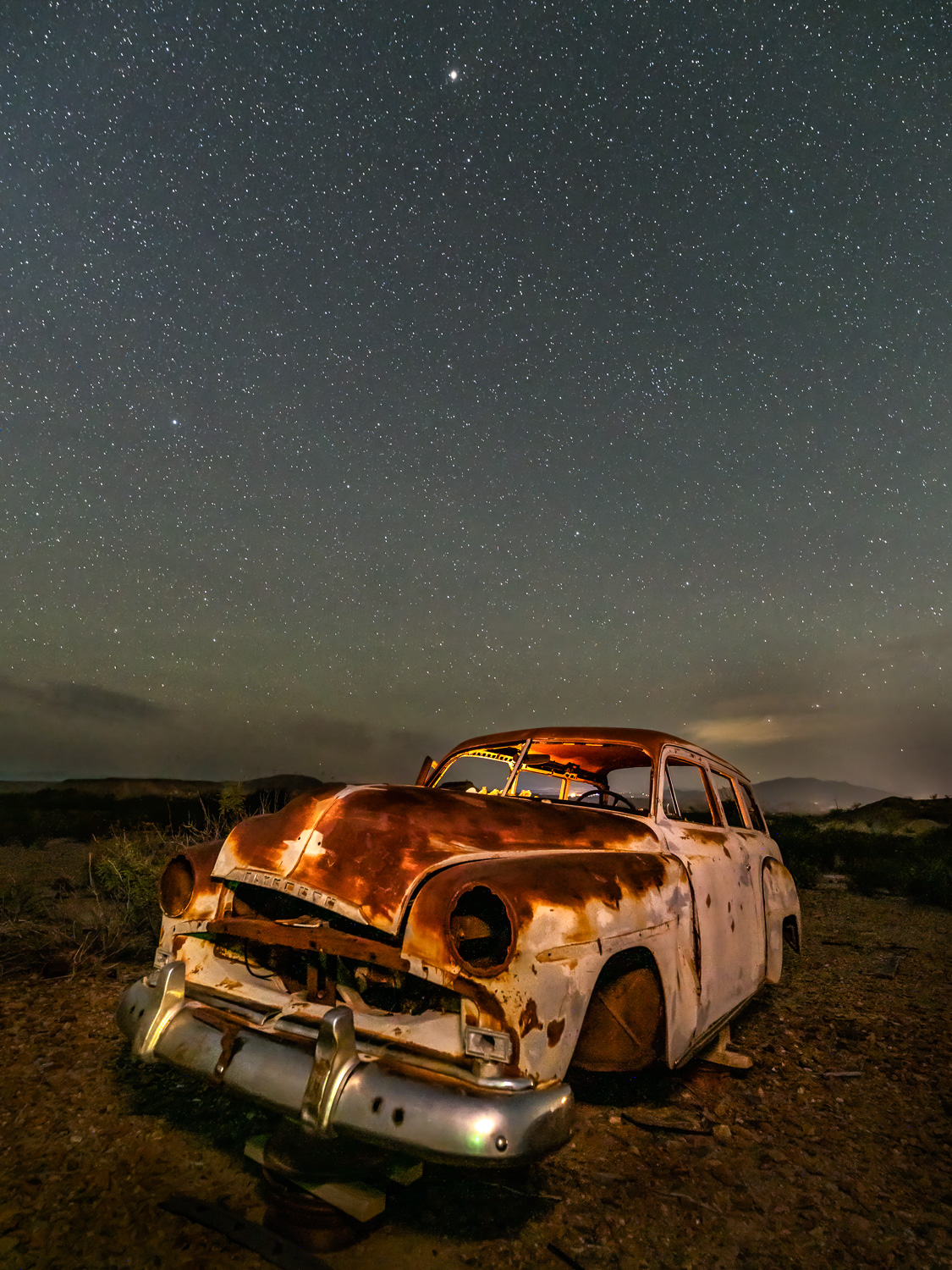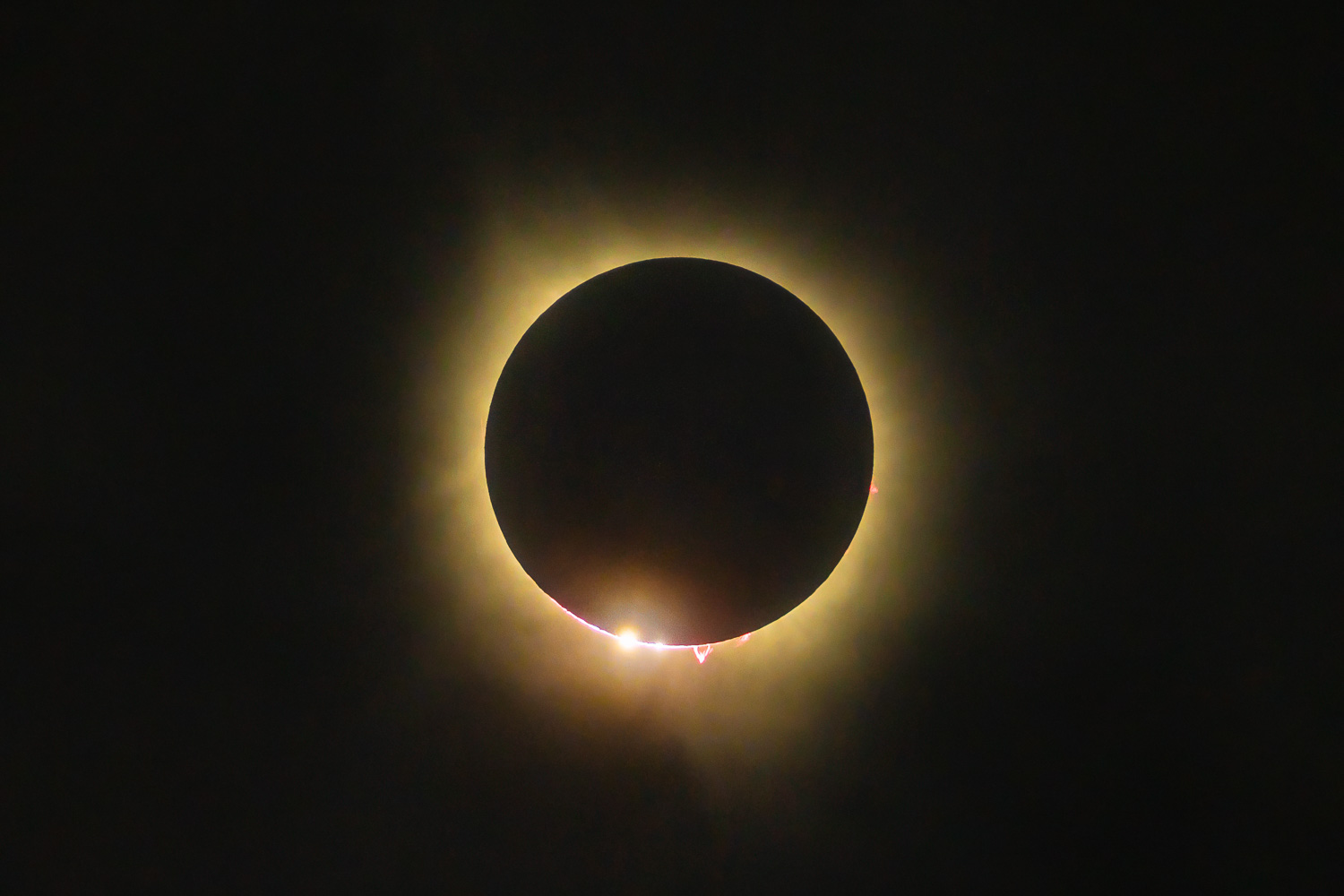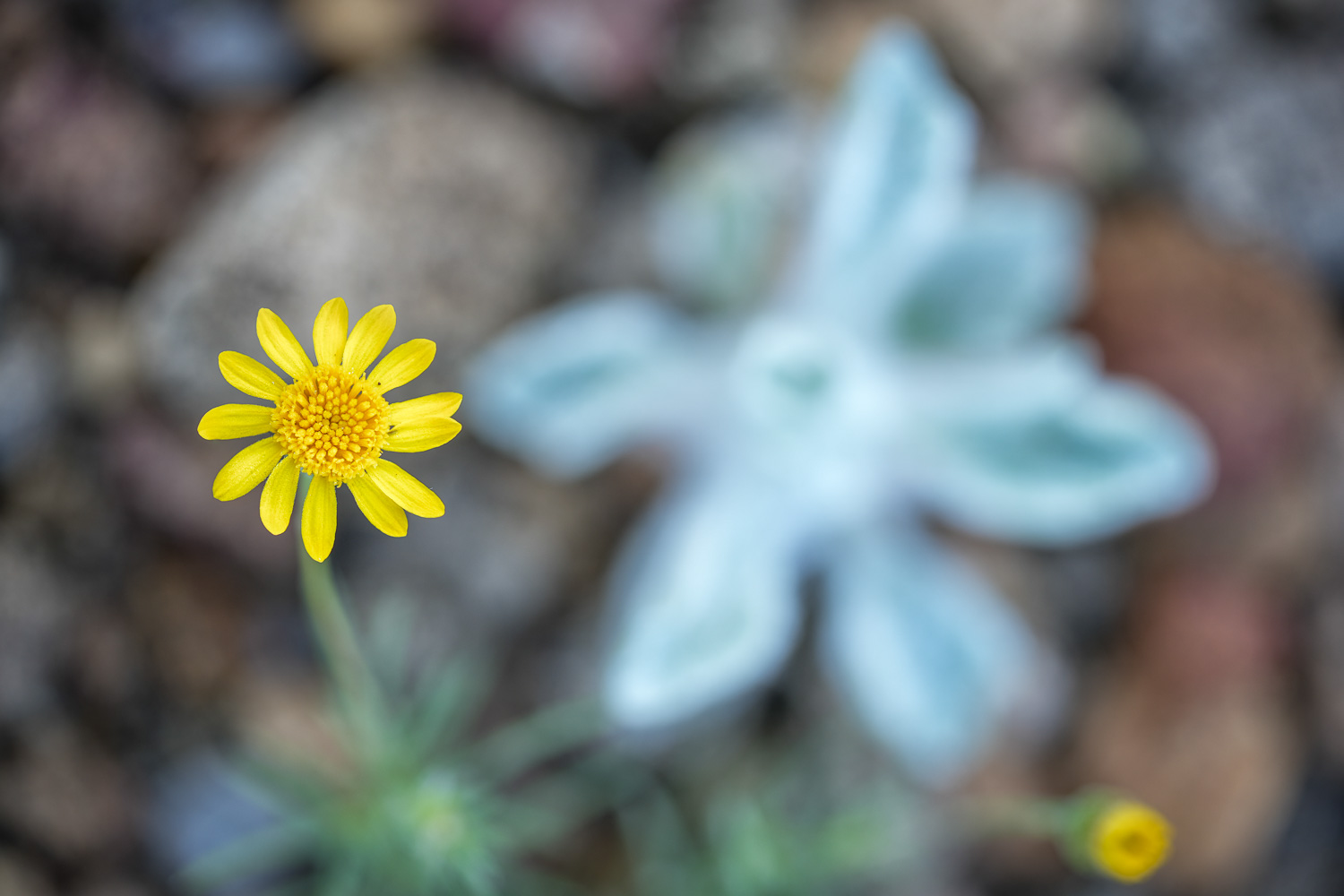Maximilian Sunflower (Helianthus maximiliani)
Description: The several tall, leafy, unbranched stems of michaelmas-daisy or maximilian sunflower grow to a height of 3-10 ft. Leaves are long and narrow, up to 10 inches near the bottom and as short as 2 inches near the top. They are alternate, coarse and hairy, slightly wavy on the edges, often folded lengthwise, slightly toothed, and very pointed. Numerous yellow flower heads grow on their own stalks terminally and from leaf axils. The flower head is up to 5 inches across, with 15-19 ray flowers, deeply veined and slightly toothed on the tip. The center is 1 inch or more across, green to dark brown. These perennial plants can form large colonies.
A native prairie perennial, this sunflower is a desirable range plant, eaten by many livestock. A heavy crop of seeds is produced, thus it is also a valuable plant for wildlife. It was named after the naturalist Prince Maximilian of Wied-Neuwied, Germany, who led an expedition into the American West in the 1830s. Another bluegrass prairie species, Willow-leaved Sunflower (H. salicifolius), has numerous long, narrow, drooping leaves covered with soft hairs and a purple-brown central disk; it is typical of rocky outcrops with heavy soil.
Family: Asteraceae
Synonym(s): Helianthus dalyi
USDA Symbol: HEMA2
Duration: Perennial
Habit: Herb
Size Class: 3-6 ft.
Bloom Color: Yellow, Brown
Bloom Time: Aug, Sep, Oct, Nov
Water Use: Low
Light Requirements: Sun
Soil Moisture: Dry
Bloom Notes: Conditions Comments: A native prairie perennial, this sunflower is a desirable range plant, eaten by many livestock. A heavy crop of seeds is produced, thus it is also a valuable plant for wildlife. Numerous yellow flower heads grow on their its stalk.
ATTRIBUTION: All of the Texas Wildflower images in this post are copyrighted and are the exclusive property of Terry B. Kahler. Reproduction without explicit written consent is prohibited. Some of the information contained in this section was taken from the Lady Bird Johnson Wildflower Center website and is being used under their terms of use. Redistribution from this site is prohibited. Additional information contained in this section was taken from the USDA website including the USDA code.
